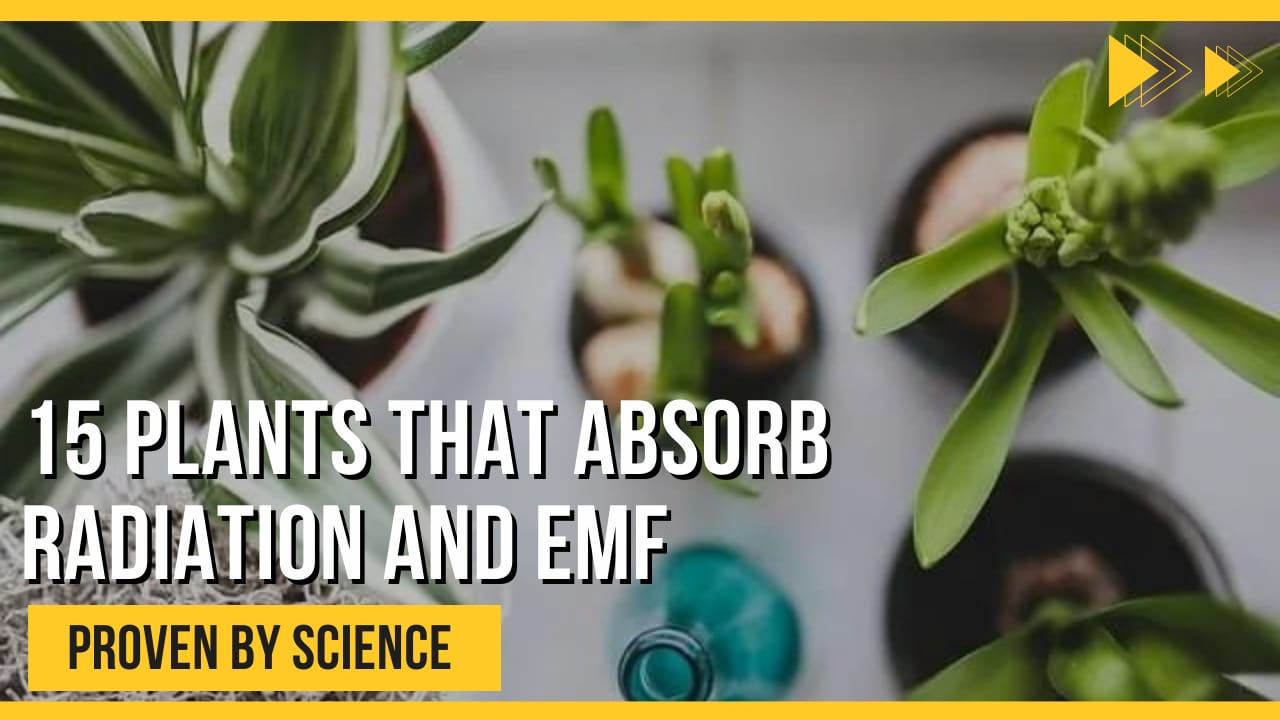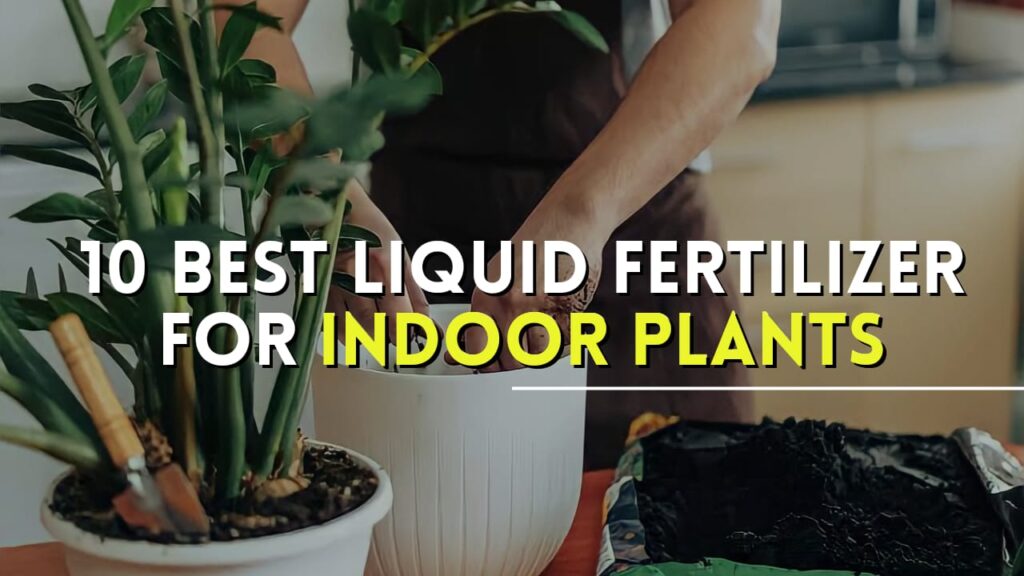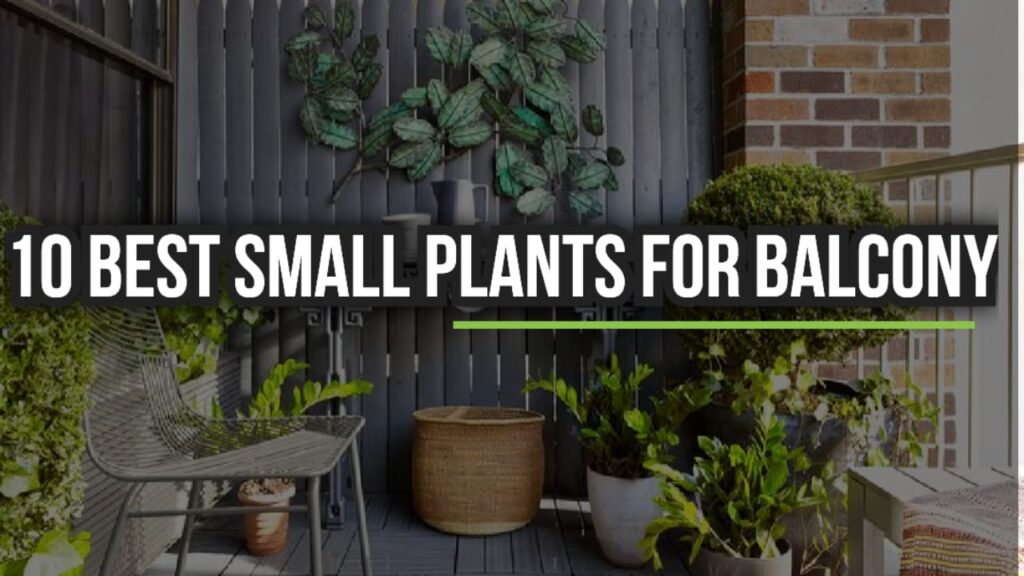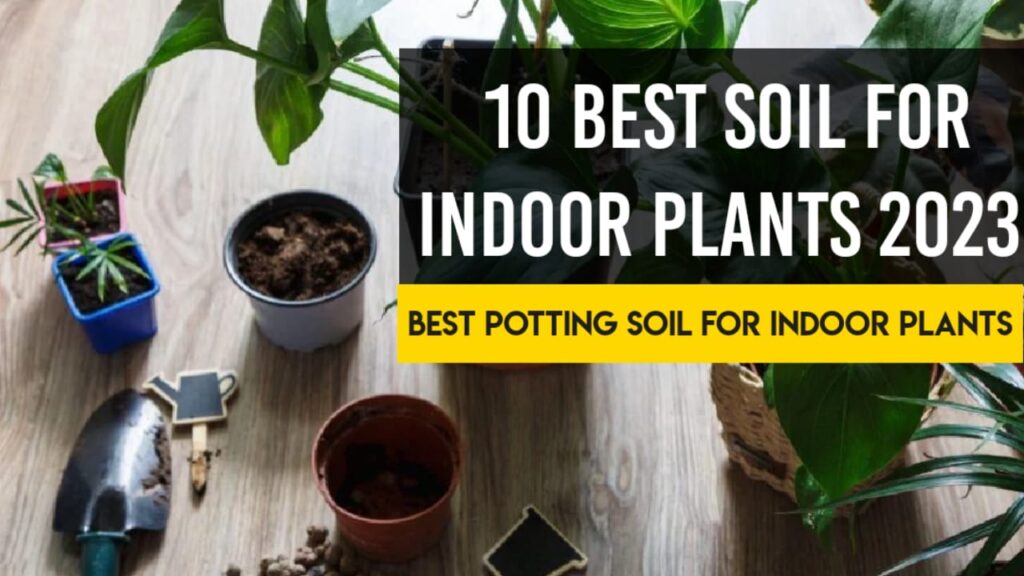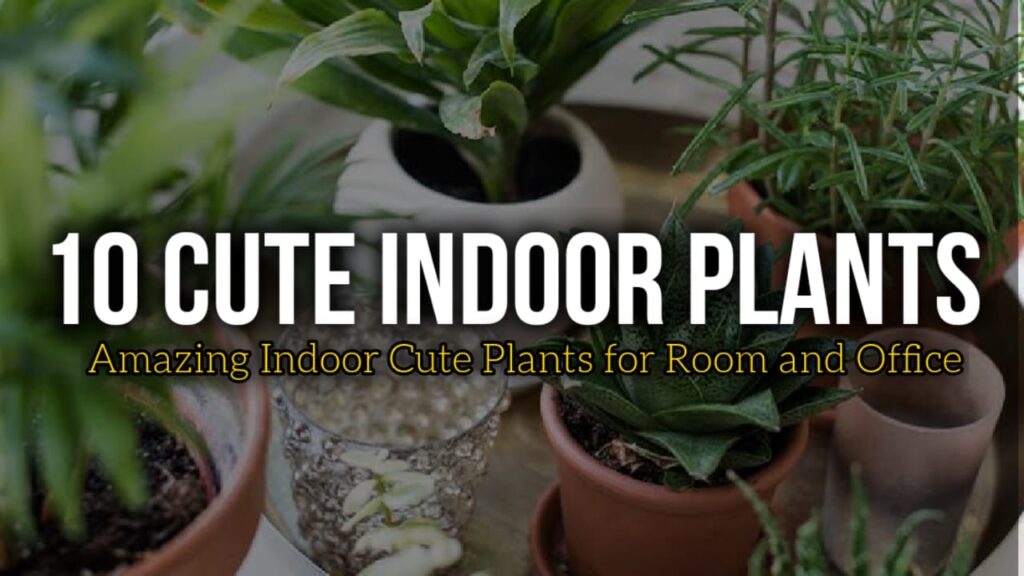Watch out! your health is at risk from EMF radiation. It’s possible to damage DNA and cells with high-frequency EMFs.
A lot of radiofrequency radiation comes from wireless telecommunication devices and equipment, like cell phones, smart meters, and portable wireless devices.
However, the good news is that NASA examined several indoor plants and discovered plants that absorb radiation and EMF.
In addition to offering a tonne of health advantages, plants can enhance the aesthetic appeal of your home. About 5 years ago, my wife and I bought our first house, and ever since then, we’ve been gradually enhancing the landscaping.
We purchase a new plant for our home always because of a known health advantage. Our house now feels like a safe haven for health with the collection of plants that absorb radiation and EMF.
We undoubtedly feel better when we are around plants that are purifying the air. Moreover, enhancing our immune systems, even though it can be a little placebo effect.
So, in this article, I’ll give you the 10+ plants I believe are most effective at reducing and absorbing harmful radiation.
The danger of EMF for our health:
Electronics eject radiofrequency radiation, but it’s non-ionizing. Non-ionizing means it will not change the chemical structure of DNA and molecules. So, it will not cause any genetic mutation (unfortunately you are not going to get any superpowers). But these electromagnetic radiations can cause some subtle and serious health effects on humans and other living beings in your household.
The calcium ions in your cell do resonate with radiation wavelength. They mess up with the movement of calcium in your cell, which eventually affects the timing of hormone release, like constantly pressing the accelerator without knowing why.
Radiations from wifi can raise your body temperature if you stay close to the router. Constant increased heat makes the enzyme of your cell work faster, which can lead to DNA errors in cells. Defective DNA can affect your immune system and also have the potential to turn cancerous.
House plants have the power to absorb the radiation and reduce the heat. Let’s discuss how
How do some plants absorb radiation?
There are three prominent ways through which plants absorb radiation- deposition, translocation, and root absorption.
Deposition happens when the radiation goes through the surface of the leaf to reach the other parts of the plant.
In translocation, the radiation travels throughout the plant from leaves to the tissues.
And, when the root of the substrate absorbs radiation, it’s called root absorption.
Actually, all plants absorb radiation to some level, but the plants I will be discussing have the power to absorb more than others.
Top plants that Absorb Radiation and EMF
1. Cactus
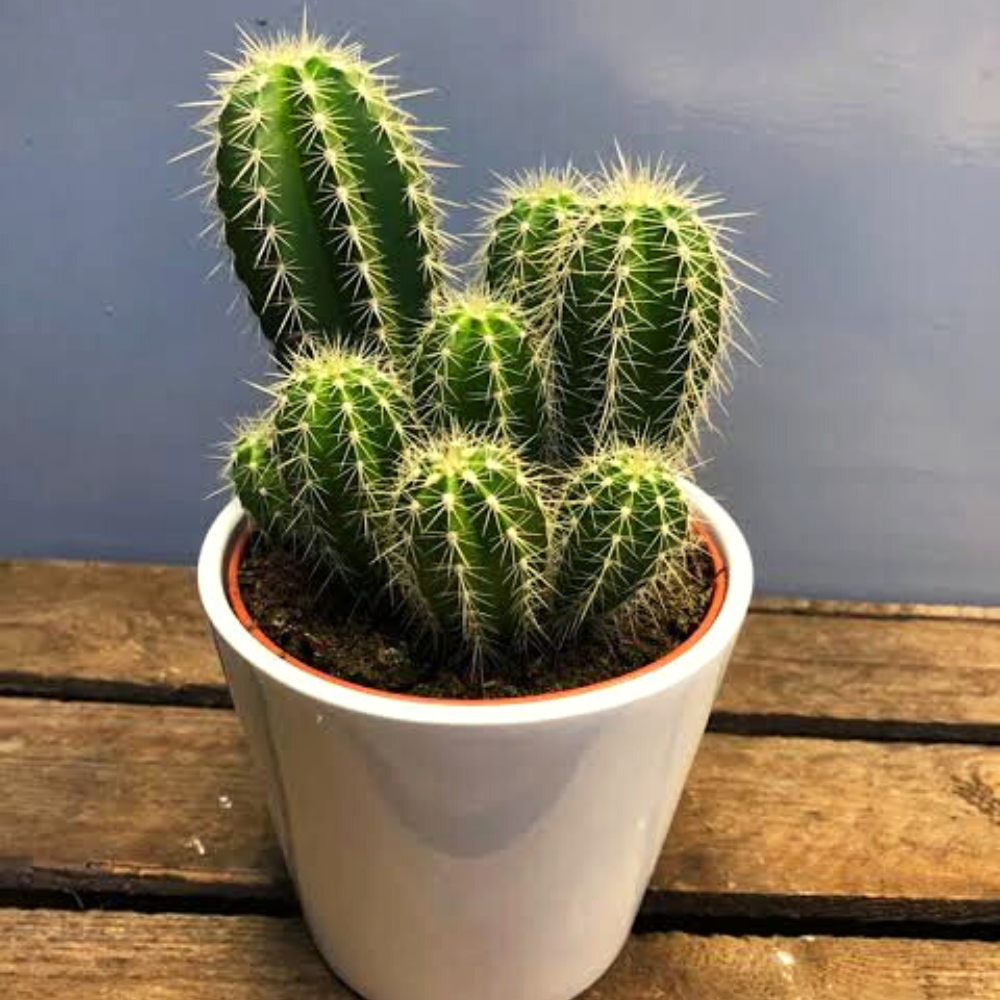
These plants are perfect for those who haven’t yet developed their green thumbs. They are highly effective in absorbing radiation and EMF. These low-maintenance plants enjoy lots of sunlight yet require little water.
Put your Cactus in a window that gets plenty of sunlight and water them about twice a month. Avoid overwatering.
2. Snake Plant
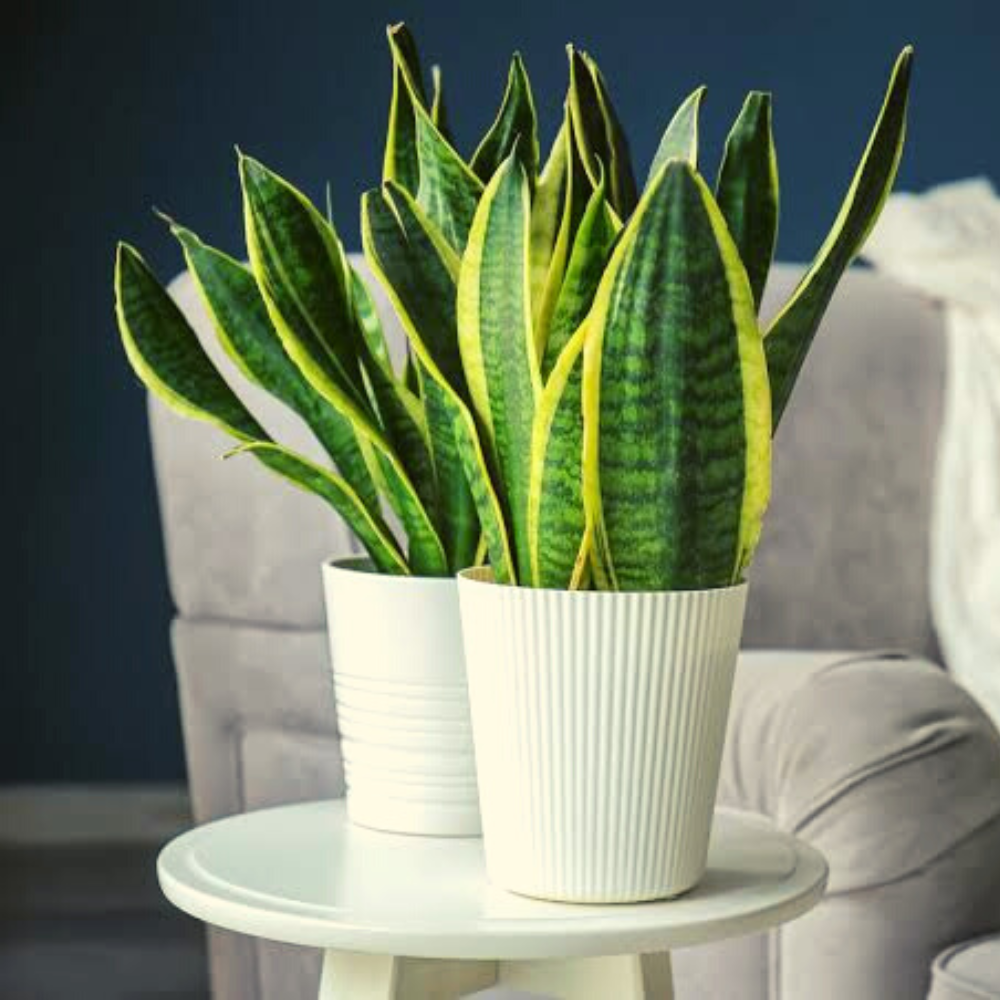
When properly cared for, these that plants absorb radiation and grow quickly. Light watering (every 2-3 weeks) and moderate sunlight exposure are all that this plant needs. Never overwater plants as root rot could result. They are incredibly independent and low-maintenance otherwise.
3. Aloe Vera

Keep an aloe vera plant in your house for a variety of good reasons. For instance, its healing gel has the ability to relieve sunburn. For best health, the EMF-reducing plant requires bright, indirect sunshine and routine watering.
4. Stone Lotus Flower

The stone lotus blossom is ideal for workstations or other tiny spaces because of its low maintenance and slow rate of growth. This plant needs sporadic watering every 2-3 weeks and direct sunlight for around 4 hours every day.
5. Asparagus Fern
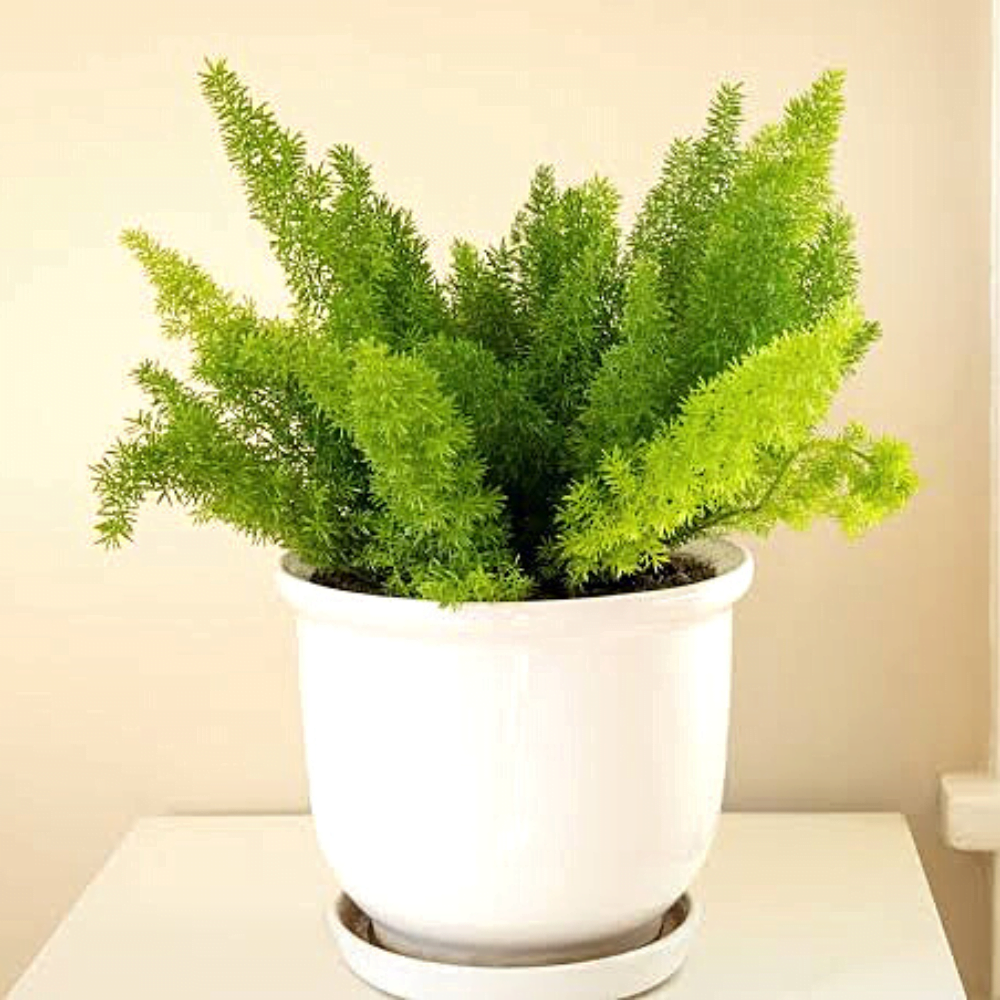
An asparagus fern is a fantastic option if you love to use fern plants as home decor. Due to its rich and vivid appearance, it makes a great indoor ornamental item. To highlight their aesthetic attributes and provide a lovely accent to your home, you can hang them in pots.
6. Mustard Greens
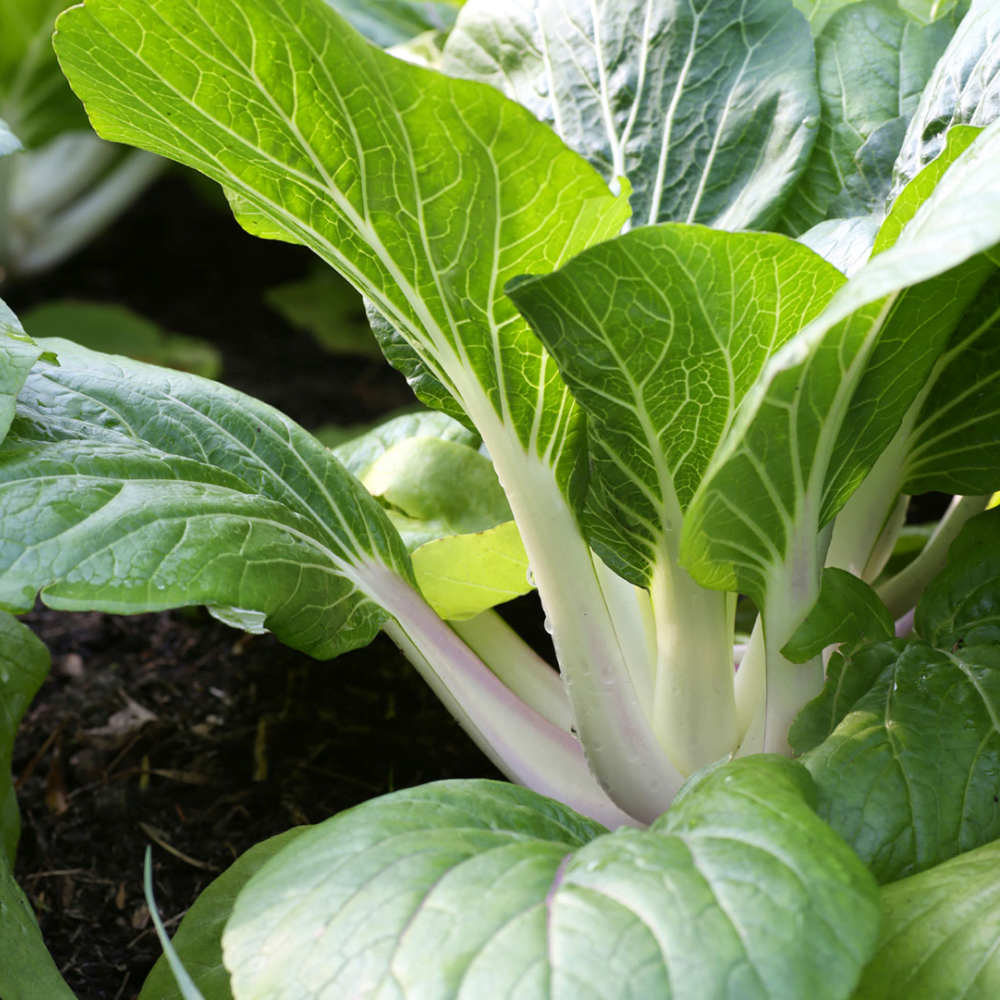
One of the best plant species you can include in your home to improve its aesthetic appeal and combat radiation is the mustard green plant. It is a delicious food item that is also nutritious. A terrific culinary element as it improves the flavor of your cuisine.
7. Betel Leaf Plant
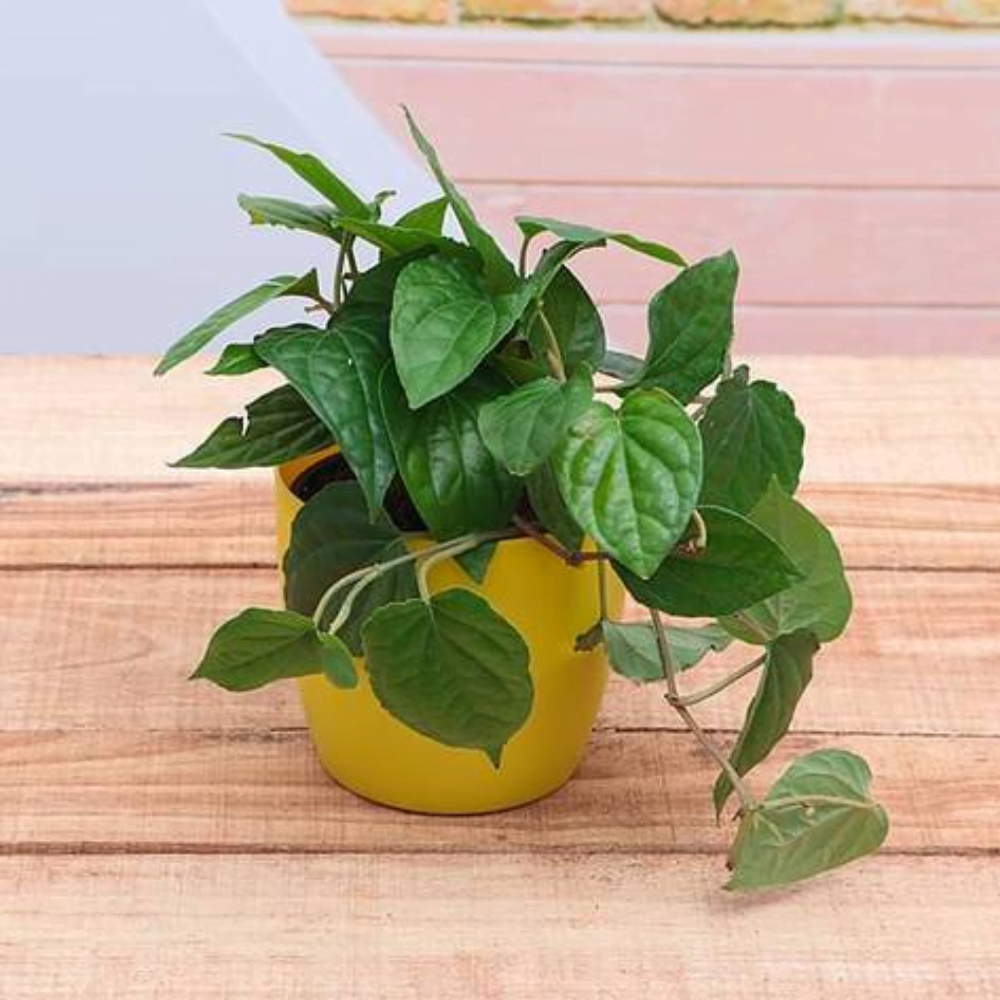
The betel leaf plant, which has lush, glossy green foliage, is not only appealing but also one of the most effective plants that absorb radiation and EMF. The plant has gone through extensive research.
This plant prefers a pot with good drainage and sufficient light. Pruning helps to encourage new growth, as does frequent watering (if leaves are drooping, it needs a drink).
8. Spider Plant
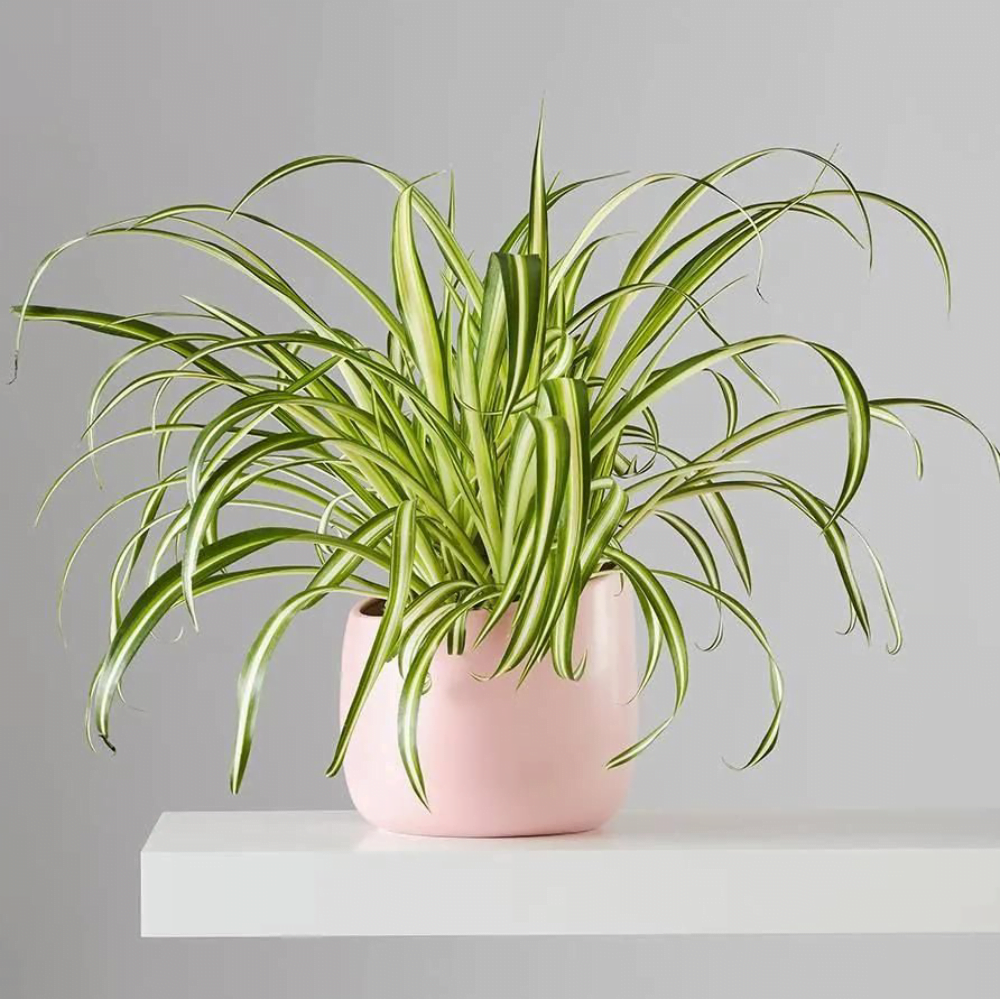
It has been proven that the spider plant has the capacity to absorb a significant amount of pollutants, even cleaning out various dangerous gases like formic acid and aldehyde.
It is thought that the spider plant can effectively absorb various types of radiation in the home because of its extraordinary capacity to remove pollution.
9. Fiddle Leaf
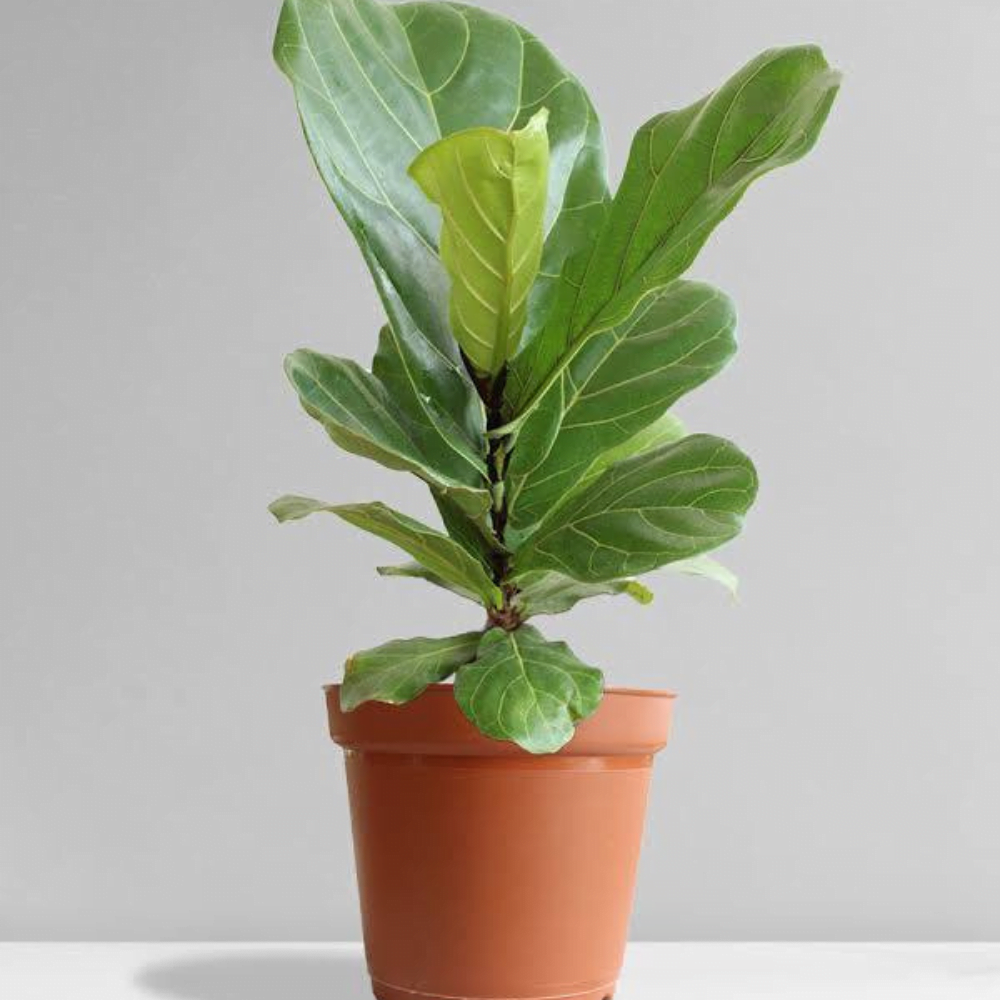
The fiddle leaf has long been thought of as a plant with the capacity to not only clean the air but also block or absorb various types of radiation.
10. Areca Palm
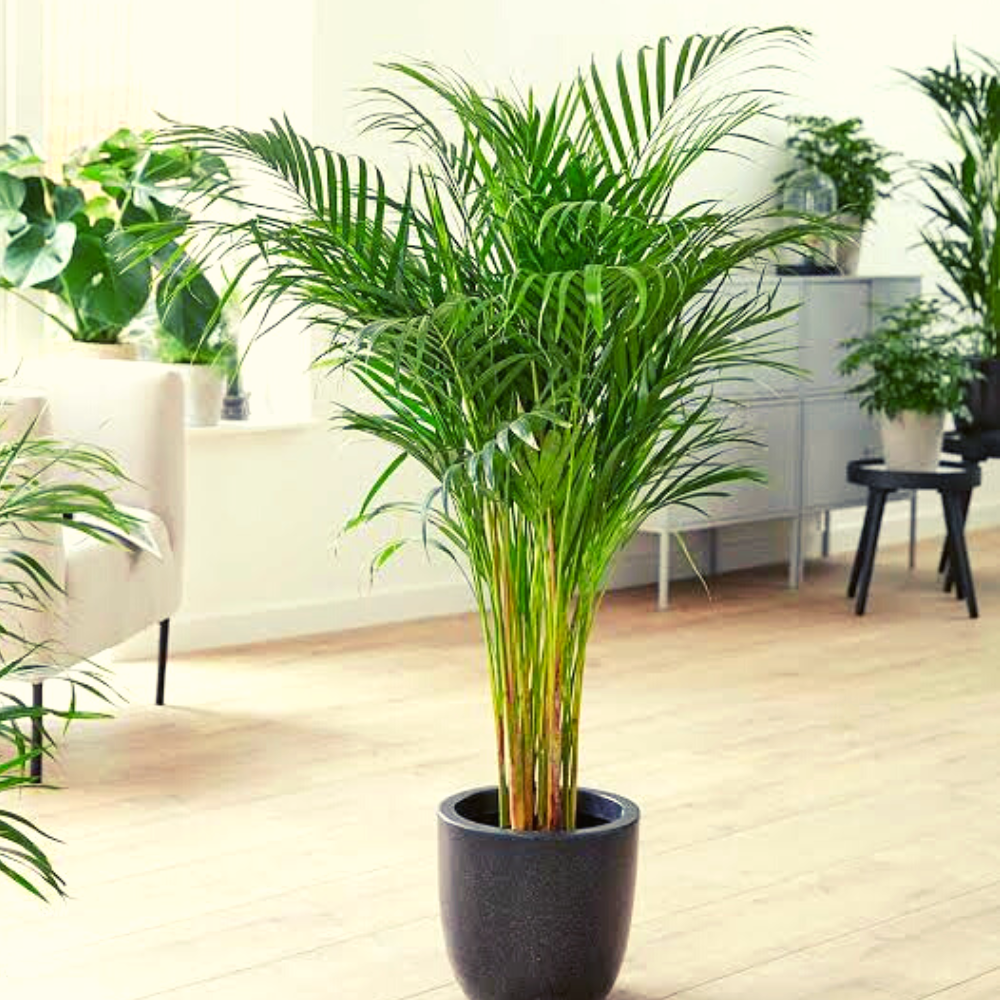
In the horticulture community, Areca Palm (Bamboo Palm) is first and foremost renowned for its capacity to rid the air of toxins, making it an excellent plant to have around.
As it emits a sizable amount of water vapor, it is also renowned for its cooling properties. This is a fantastic technique to introduce some natural humidity into your house if you reside in a dry climate.
11. Sunflower
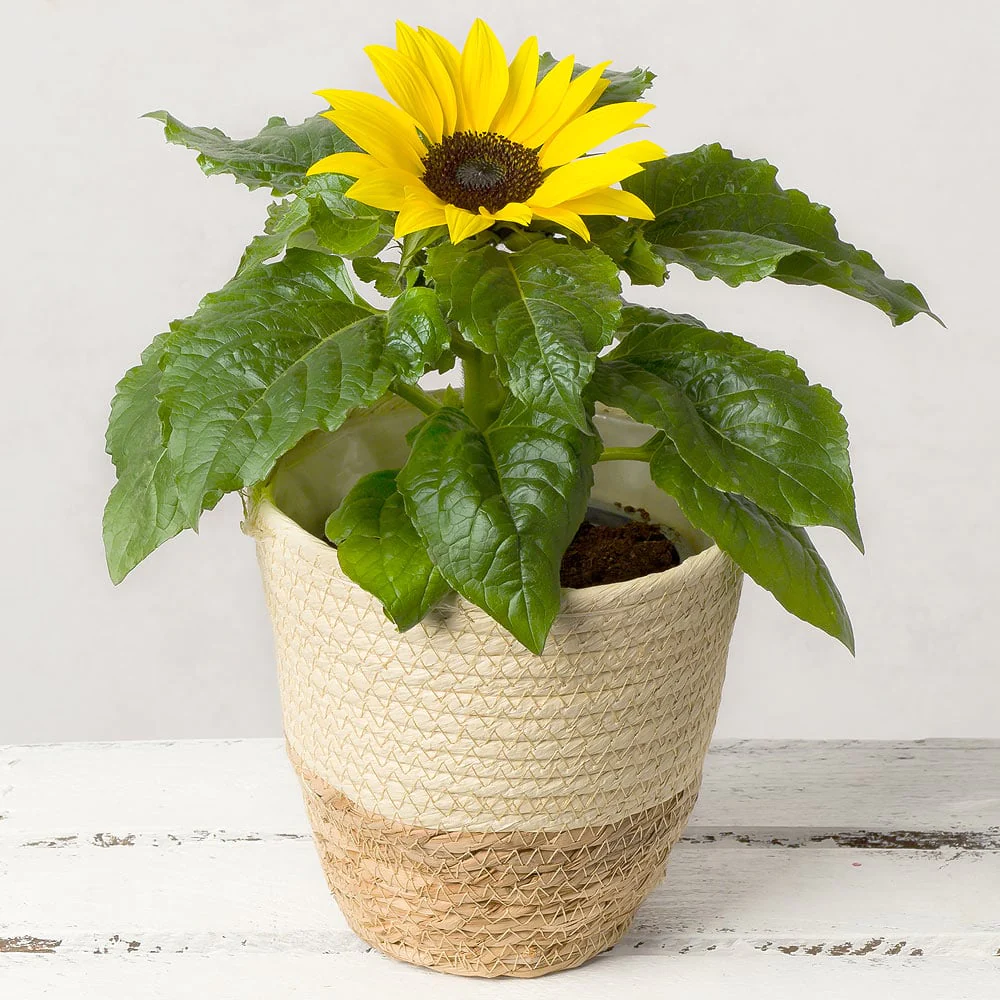
Did you know that the purpose of planting sunflowers around Chernobyl was to assist them absorb dangerous radiation? Additionally, these lovely plants can lower EMFs in the office or house. Regularly water and fertilize. Ensure that they receive at least 6 hours of direct sunlight each day.
12. Rubber Plant
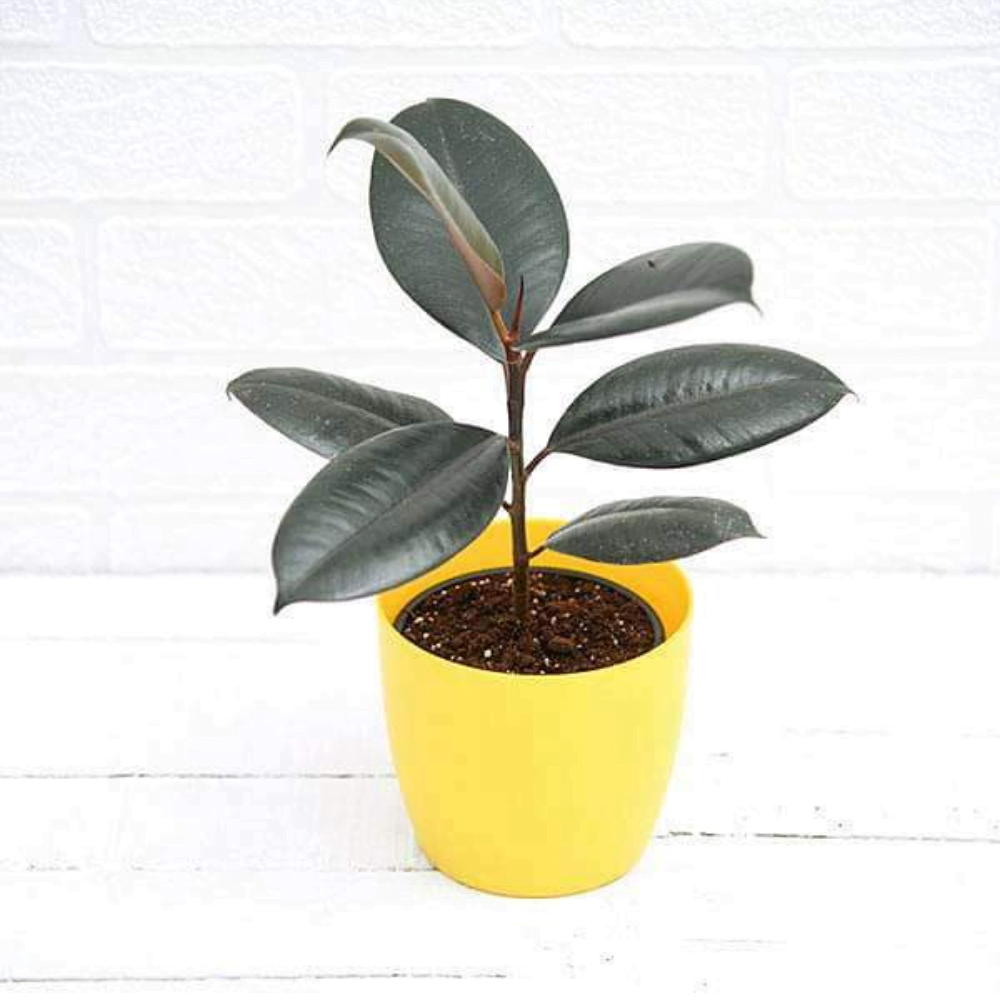
Another great air-cleaning plant and the radiation-absorbing plant is the rubber plant. Easily maintained, it can be grown indoors or outdoors. Maintaining the moisture requirements of appealing rubber plants is the secret to keeping them healthy. Regularly spray the foliage and keep the soil damp (but not soggy). The plant is helped to draw sunlight by misting.
13. English Ivy
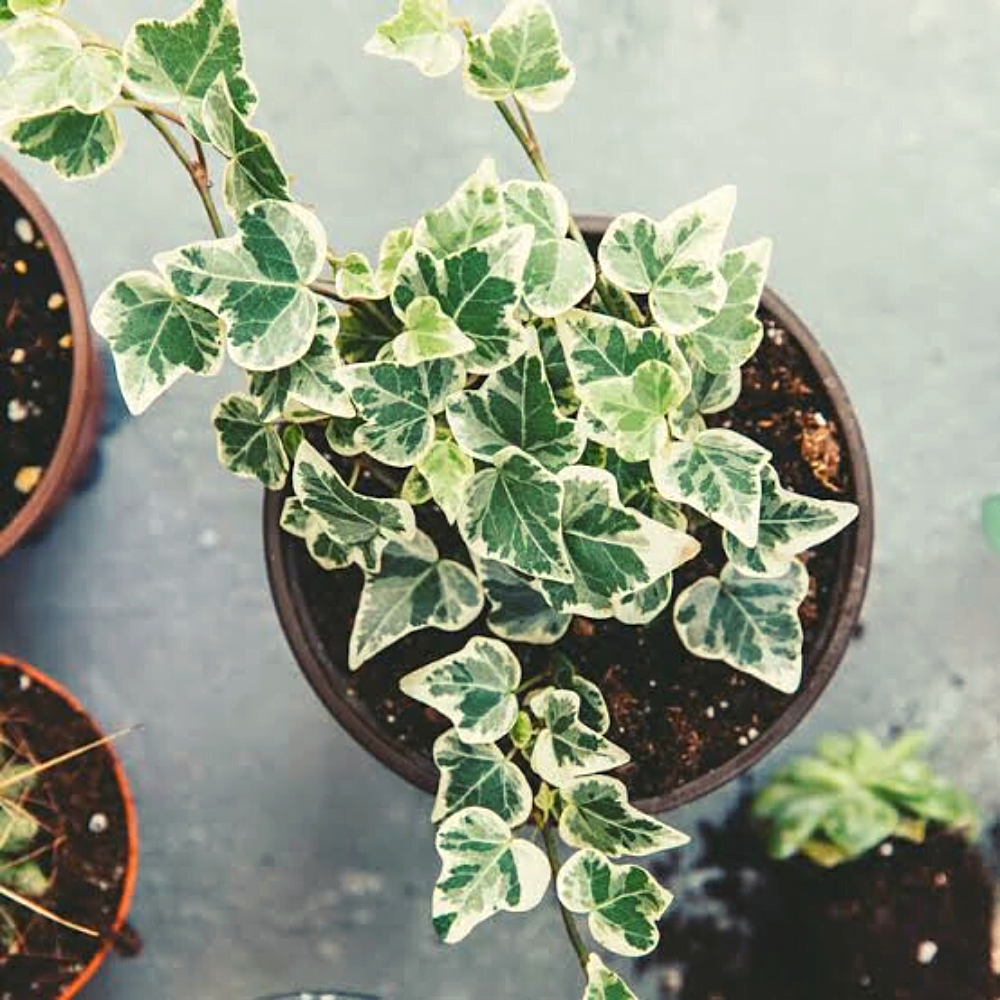
The English ivy is a vine that thrives best when left alone and is an evergreen plant with limitless potential. If there are small gaps and crevices where its roots can establish themselves, this resilient plant can flourish in almost any place. It can be grown as an indoor plant in hanging baskets or shallow pots, where its trailing shoots can delicately cascade.
14. Split-Leaf Philodendron
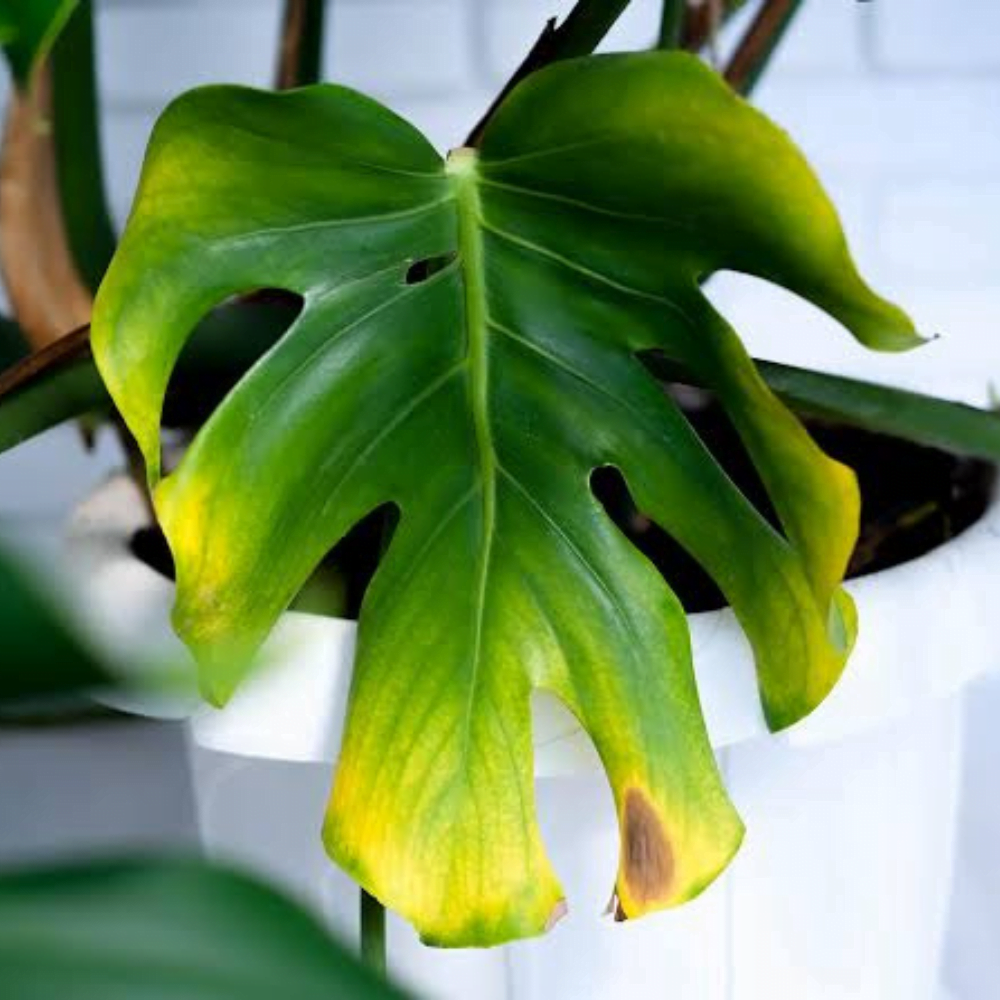
The split-leaf philodendron is stunning with its distinctive foliage and vivid green color. Avoid keeping this EMF-absorbing plant in direct sunlight. It requires a well-draining pot and moderate watering (once per week).
Best Plants That Absorb Radiation
1. Cactus
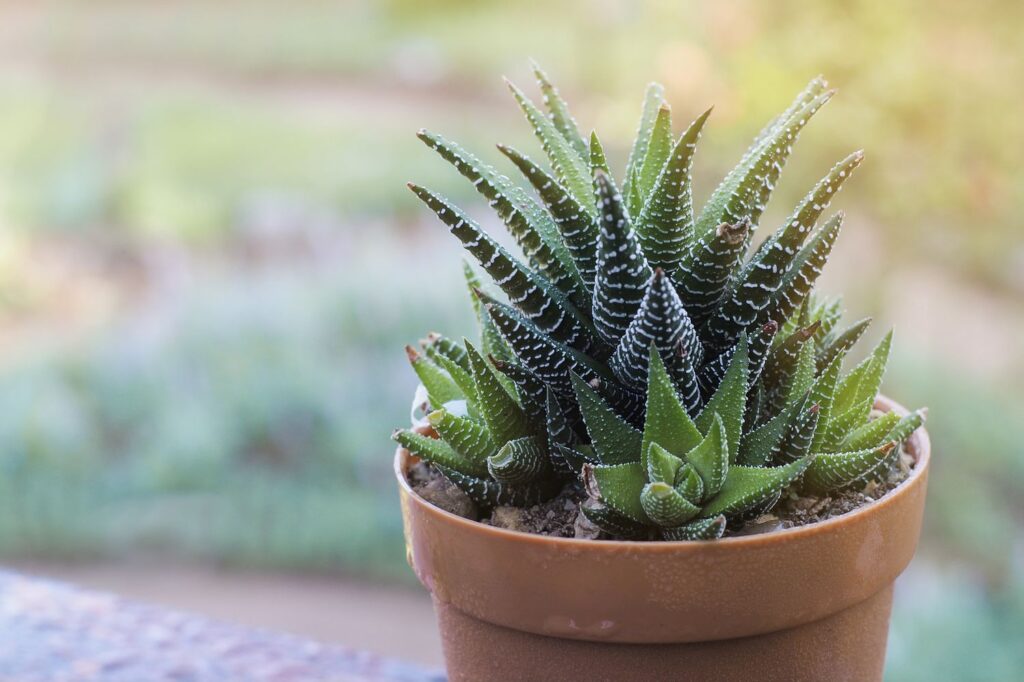
Have you ever seen the plants with the often extremely prickly stalks and mushy leaves? They most likely belong to the cactus family.
In reality, the term “cactus” comes from a Greek word that means thorny or spiky. Cacti are among the greatest plants for absorbing radiation and EMF, despite how frightening the spikes may seem to someone who has only seen a picture of this plant.
You can be protected from certain radioactive activity by cacti. For those of us who DON’T have a green thumb, bonus points:
- They are simple to cultivate and keep up.
- You don’t need to water and watch over it constantly as it naturally flourishes in dry locations.
Growing Advice for Cactus
Cactus can be grown either from seed or from a cutting taken from the mother plant. Here’s how you can do it:
- Pick a sizeable clipping from a robust mother plant.
- Choose a container to grow your cactus in.
- Cactus-friendly soil, such as that found in arid regions, should be used to fill the pot.
- Place the cut-off piece of cactus in the centre of the pot, about 2 inches deep.
- Just softly spray the ground. Avoid flooding it too much.
- Place the clipping you just planted in a well-lit area.
- For upkeep, water your cactus no more than twice a month. Never overwater.
2. Snake Plant
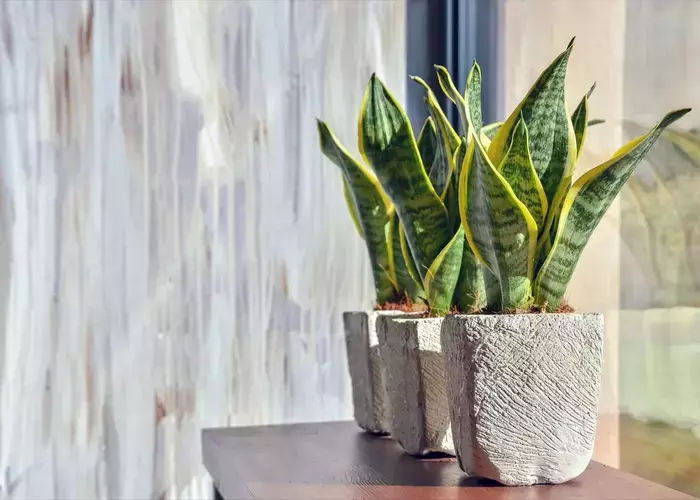
Sansevieria research has revealed that this plant is capable of actively absorbing more than a hundred distinct poisons.
Studies have revealed that this plant, which is a strong anti-pollutant, is also useful as an antidote for exposure to several types of radiation, including EMF.
It is a resilient plant that is simple to cultivate indoors in terms of maintenance.
Growing Advice for Snake Plants
Before deciding to grow a snake plant, there are a few things to consider:
- Despite the fact that snake plant may survive in both bright and dark environments, they grow best in bright light.
- Indoor plants like sansevieria have adapted to flourishing in moderately dry environments, so little watering is needed.
- Snake plants do well in the 50 to 80 degree Fahrenheit range.
- Fast-draining soil is the greatest sort of soil.
3. Aloe Vera
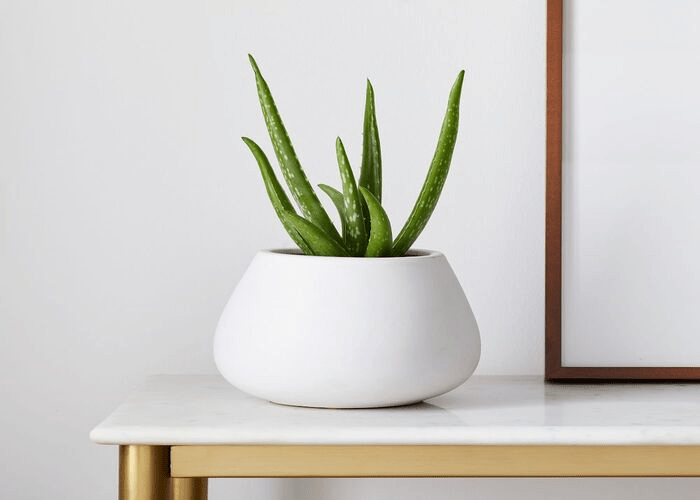
Aloe Vera is one of the best plants that absorb radiation and EMF emissions. Additionally, its has highly powerful therapeutic properties.
Like other plants, it aggressively absorbs carbon dioxide while simultaneously releasing oxygen. Thus, it helps cleanse the air in your space.
It is a clear victor among houseplants since it is simple to grow and attractive to look at.
Aloe Vera Growing Advice
The main plant will continuously produce new Aloe Vera plants.So, all you have to do is choose the fresh plants and place them in the pot or container of your choice.
- You should exercise caution when adding water to the plant. Root rot and wilting leaves are the results of too much water.
- The ideal soil resembles the quick-draining soil used to grow cacti and other succulent plants.
- Keep your plant in a bright area, but out of direct sunlight, for optimal results.
- Place the plant directly in front of any EMF-emitting gadgets for it to absorb radiation effectively.
4. Stone Lotus Flower
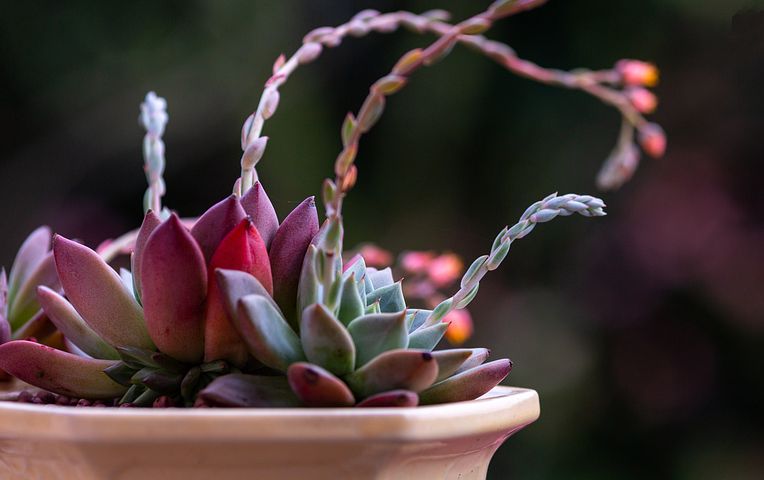
Most people prefer the stone lotus flower indoors since it is ideal for desks, which are frequently EMF hot spots because of computers, wireless printers, and other devices.
The stone lotus flower is a stunning plant that also purifies the air effectively. Additionally, it is said to be capable of effectively absorbing poisons like EMF radiation.
Due to its numerous health advantages, it is even widely used.
Growing Advice for the Stone Lotus Flower
You can grow stone lotus from a tuber or from a seed. From seed to plant:
- Scrape off the husks from the seed.
- The seeds should be soaked in warm water that is changed every day. Remove any floating seeds before planting.
- Within the water, the seedlings will begin to grow.
- Take them out of the water and plant them in a pot once they reach a height of about 6 inches.
- The roots can rot if they are overwatered. Weekly watering is best.
- The Lotus plant needs 6 hours of direct sunlight per day.
5. Asparagus Fern
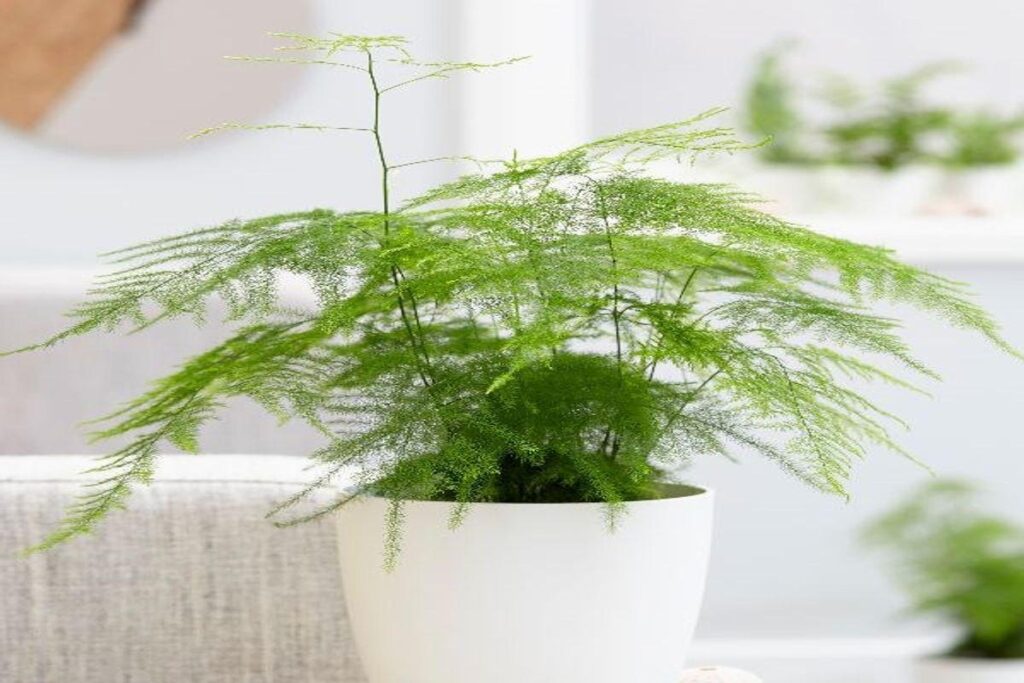
As well as providing a pleasant scent, it absorbs a great deal of radiation in places with high EMF levels.
Its antioxidant qualities have also shown to be beneficial in the treatment of gamma radiation exposure sufferers.
Growing Advice for Asparagus Fern
- The spurs on asparagus fern are somewhat prickly. Wearing gloves while working with this plant might be a good idea.
- Asparagus can be grown from seeds or cuttings.
- Despite its ability to adapt to light, the plant often grows well in shadow.
- Plant your asparagus fern in potting soil that drains well.
- Water is a crucial resource needed for asparagus fern. Make sure to water it frequently—at least once a day.
6. Mustard Greens

Mustard greens are an effective phytoremediation plant in areas contaminated with hazardous radioactive substances. It can hyperaccumulate hazardous substances and metals that have attached to substrates, just like sunflowers can.
Some cultivars of B. juncea have been observed to undergo mutations as a result of gamma radiation exposure. The plant can take up enough radiation in a lab setting to drastically change its genetic code.
Growing advice for Mustard Greens
- The best time to plant mustard greens is in spring and fall.
- You can grow these tasty greens in pots, containers, and in the ground.
- Make sure the soil is fertile, well-drained, and pH is 6.5 to 6.8
- Mustard needs full sun to part shade and temperatures between 50 and 75 degrees.
- Give mustard greens a weekly watering of one to two inches
7. Betel Leaf Plant
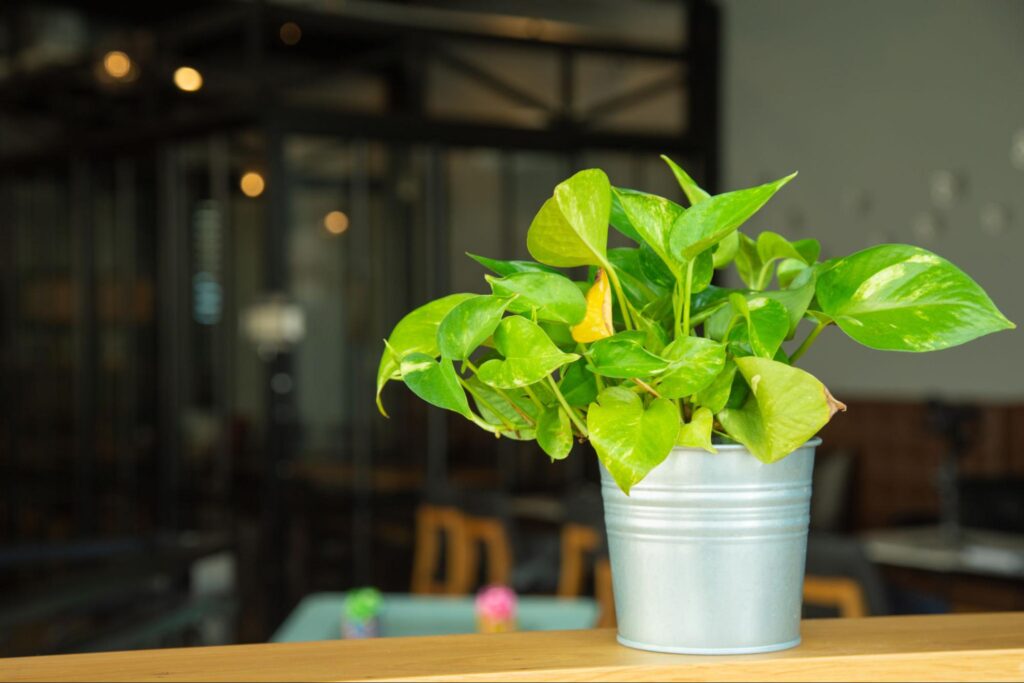
There is research that back up the idea that betel leaf plant is one of the most reliable EMF absorbers. According to a study done by experts in India, it functions by reducing radiation-induced DNA damage.
Growing Advice for the Betel Leaf Plant
The easiest way to get started is to purchase a betel leaf plant and cultivate it in your house or business.
You can also grow other plants from the mother plant, though:
- Take a clipping from the main plant that is about 18 cm long.
- Cut the plant with a knife slightly below the leaf node.
- Remove any leaves that are present because they will impede the growth process (the two uppermost leaves can stay as they are).
- Add water to the glass with the cuttings.
- Change the water in the glass every two days while letting the clippings stand for roughly a week.
- Put the glass in the direct sun.
- Transfer the cuttings to a pot and plant them once a few roots have formed.
8. Spider Plant
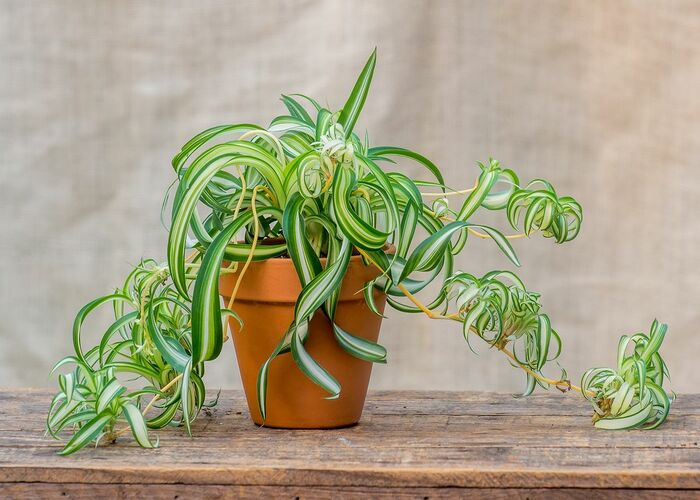
A typical variety of succulent is the spider plant. According to studies, spider plants are able to absorb a wide range of contaminants, including dangerous gases like formic acid and aldehyde.
Due to its remarkable capacity for absorbing contaminants, it is also a potent EMF radiation absorber.
Growing Advice for Spider Plant
Spider plants are tough plants that can survive the hardest conditions and still develop. When the conditions are right, they bloom with gorgeous leaves, making them the ideal indoor decor plant.
- A bright, moderately lit room with a comfortable temperature is ideal.
- Make sure the soil is moist.
- In spring and summer, water once a week; in winter, let the soil dry more between waterings.
How to raise them:
- These are without a doubt among the simplest houseplants to grow and reproduce. You only need to obtain a plantlet that has developed roots.
- You’re good to go after you put the plantlets in a different pot.
- You can also separate the main plant into two parts and repot each part.
9. Fiddle Leaf
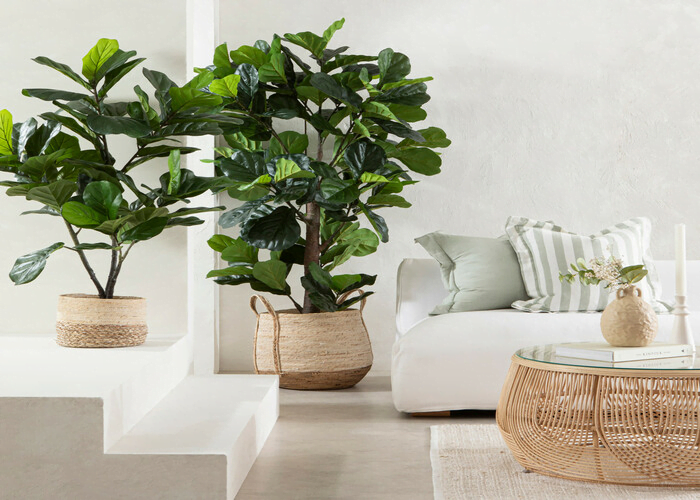
The fiddle-leaf fig, which is in high demand as a decorative indoor plant, is both the scourge and the joy of many knowledgeable horticulturists.
It is well recognised for being fairly difficult to manage, especially if you want the oldest leaves to stay in immaculate condition for the whole of the plant’s life.
It is a member of the mulberry family (Moraceae). In ideal conditions, it can reach a height of 15 metres (50 feet), making it a beautiful tropical tree.
The glabrous, lyre-shaped leaves of the fiddle-leaf fig are one of its favourite features. The symmetrical structure of the entire plant contrasts nicely with their crinkled edges.
F. lyrata leaves are excellent for absorbing indoor radiation and pollutants due to their wide surface area. When the leaves are positioned properly, they should ideally assist filter off radiation (albeit not completely eradicate it).
However, keep in mind that this tree is poisonous and should not be kept in areas where kids or animals can easily get it.
Growing Advice for fiddle leaf fig
- Fiddle Leaf Figs like a warm, humid environment, water and lots of light.
- Put the tree somewhere bright with lots of ambient light, away from air vents and drafts.
- It’s best to water Fiddle Leaf Figs once a week, then let the soil dry out completely between waterings.
- Water less frequently in winter to prevent overwatering and root rot.
10. Areca Palm

Popular indoor plants include areca palms because of their attractiveness and well-known capacity to filter the air of contaminants.
It is particularly prevalent (and practical) in homes in arid regions since it emits a lot of water vapor, which is crucial for cooling the surroundings.
It is also a strong EMF radiation absorber, especially when put in clear, direct line with the EMF-emitting device.
Due to this, areca palms work best when placed in front of outlets or sprinkled throughout homes with home offices.
Growing Advice for the Areca Palm
Although it is not as hardy as some of the other radiation-reducing plants I’ve mentioned, areca palms are simple to grow indoors.
- Get a miniature areca palm plant for your table (bigger is fine – they just get expensive).
- To keep it healthy, water it thoroughly and frequently, and fertilise.
- Always keep in mind that pruning encourages areca palm growth.
- Assure that the potting is changed at least once per year.
11. Sunflower
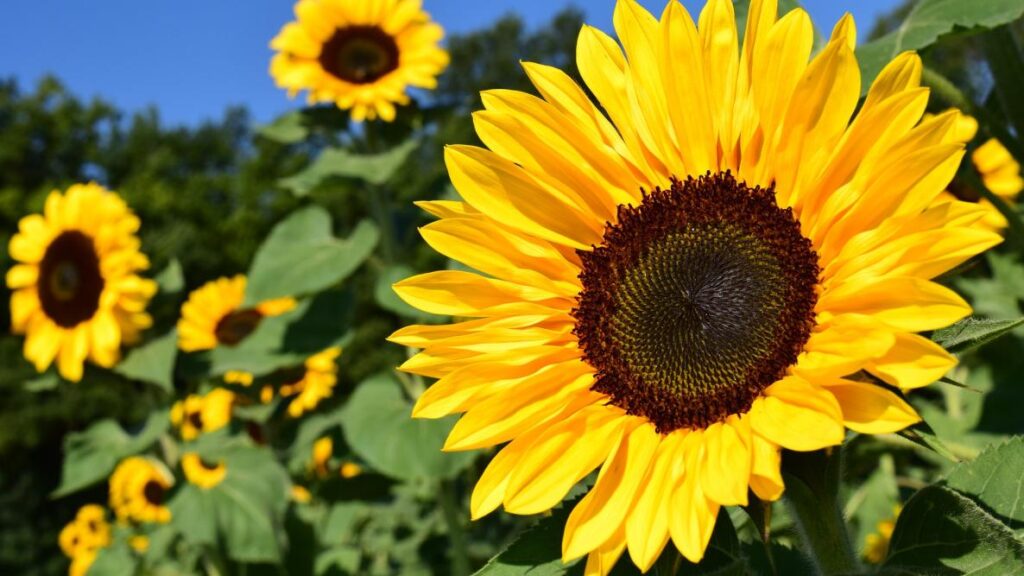
In hazardous places, tens of thousands to millions of sunflowers have been planted to assist absorb radioactive emissions. Sunflowers are one of the best-performing plants for naturally absorbing radiation.
In order to assist remove radioactive cesium from the environment, sunflower plants were in fact planted close to the Chernobyl site.
Growing advise for Sunflowers
- In shallow trenches with sandy soil, space the seeds evenly. In depths up to 2 inches, the spacing should be approximately 6 inches.
- Water the seeds after covering them. They take 7 to 10 days to sprout.
- Once they have developed their second set of leaves, thin the plants to a distance of about 2 feet.
- After planting, the plants often begin to produce seeds 80 to 120 days later.
- For them to grow well, they need a lot of sunlight (approximately 6-8 hours a day), so plant them where they get plenty of sunlight.
- As sunflowers have long roots, they need plenty of space, so plant them somewhere with loose, well-draining soil that’s well-dug.
12. Rubber Plant
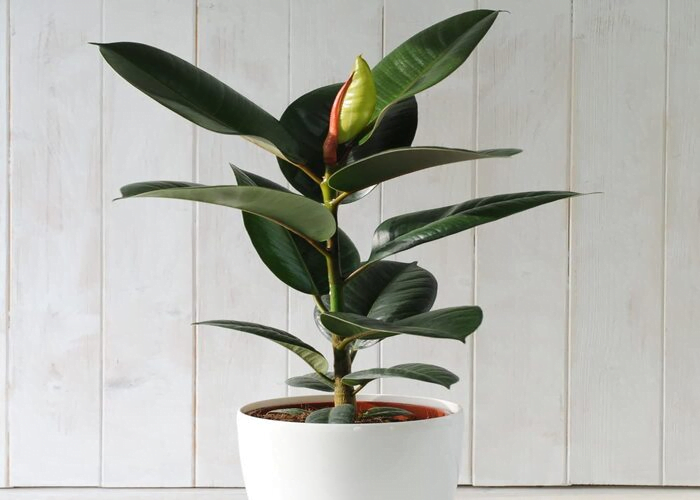
The rubber plant is a simpler plant to care for and keep alive. Although some people would choose to plant it outside, it is suitable for indoor planting due to its smaller size and quicker growing rate.
Growing Advice for the Rubber Plant
A rubber plant can be cultivated from seeds or stem cuts:
- Get a stem cut from an established plant.
- Place the stem in a pot or other rooting medium.
- It needs six to eight hours of light a day.
- Place a sheer curtain over your windows if they get harsh direct sunlight.
- When the soil is almost dry, water it.
13. English Ivy
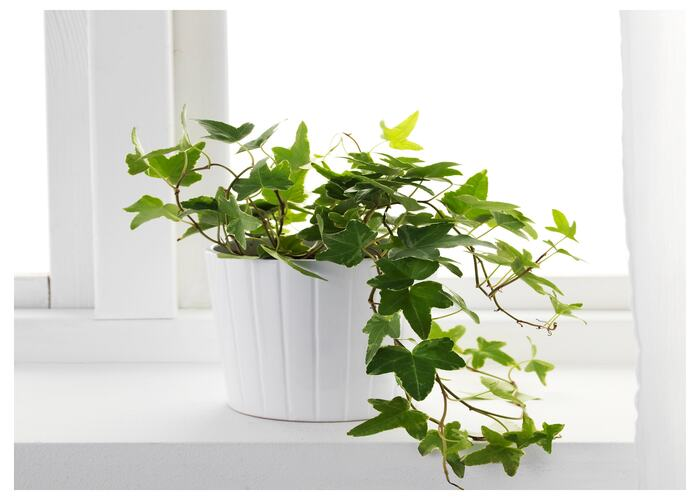
English ivy can be planted outside along trellises and walks with natural roofing, where the shoots and leaves can act as a sun screen.
The ability of this species to absorb UV light is astounding. Its nanoparticles are reportedly a component of organic sunscreens that may surpass those made of metal.
English ivy stands out for its palmate leaves, which are simple to grow, propagate, and maintain. According to cultivar, these vary in hue and degree of variegation, and many have won the RHS Award of Garden Merit.
Growing Advice for English ivy
- Consider adding a few hanging pots of English ivy if the sunshine enters your home too sharply.
- They need good air circulation, and they shouldn’t be crowded.
- The best temperature for ivies is 50 to 70°F during the day and 5-10°F lower at night.
- For english ivy, use a good, rich commercial potting mix. Plant them in a container that drains well.
14. Split-Leaf Philodendron
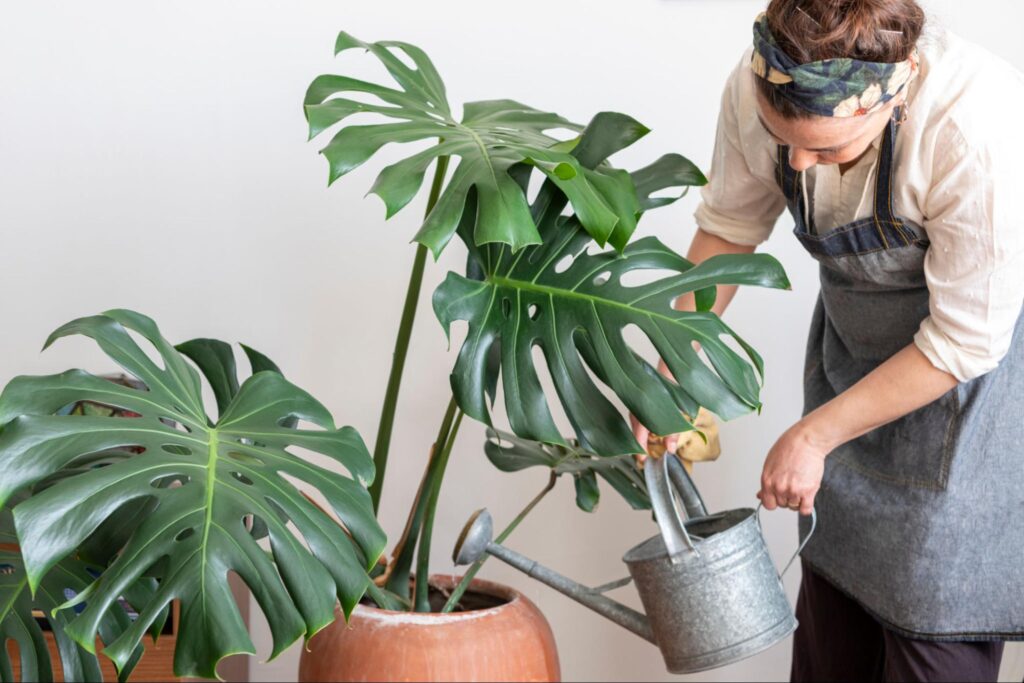
It’s no mystery why the Split Leaf Philodendron appears in interior design posts on social media-it’s very popular and easy to care for.
Growing advise for Philodendron Split Leaf
- In the summer, it thrives in strong light, and in the winter, it prefers direct sunshine. Although this plant may be cultivated in fluorescent lighting, it doesn’t grow well and doesn’t produce the trendy leaf perforations.
- It requires little water and can last up to ten days without it (depending on the habitat or climate).
- When watering your Split Leaf Philodendron, be sure to completely moisten the soil and allow it to slightly dry between applications.
- It thrives in hot, and humid conditions. It requires a consistent daytime temperature of between 75 to 85 degrees F.
- Plant your Split Leaf Philodendron in peat moss-rich, rich soil.
- To allow for the development of roots, which will in turn lead your plant to grow large, stunning leaves, you should provide plenty of space.
Other plants that absorb radiation and EMF
You can also consider below three plants for absorbing radiation and EMF. They are easy to care and aesthetically pleasing.
Golden Pothos
Even though the pothos won’t block electromagnetic radiation completely, it’s a great specimen for calming the mind and letting go of stress. According to a Japanese study, touching the leaves of golden pothos calms you down.
Peace lily
The peace lily absorbs formaldehyde, trichloroethylene, and benzene. As a natural humidifier, it keeps the bedroom humid while you sleep.
Weeping Ficus
Indoor trees like ficus are great air cleaners and will reduce your home’s trichloroethylene, benzene, and formaldehyde levels. It might be better to get a ficus if you want something bigger than your average houseplant.
FAQs
Do plants that absorb radiation can block radiation?
The ability to block or reduce means attenuation, meaning minimizing the force of radiation when it passes through it. Many materials like walls and tinted windows can attenuate radiation as well. Plants, whose leaves can hold a good amount of water can do it better.
What plant is best for absorbing radiation from a computer?
Cactus. NASA has found that cactus is one of those plants that practically impact on absorbing radiations from electronic devices. So, keeping a tiny cactus in a tiny pot near your computer desk will be a great choice.
Conclusion
The majority of people in today’s world are frequently exposed to electromagnetic radiation. Many daily activities expose us to these dangerous waves, including using cell phones, microwaves for cooking, and electric shavers.
The development or escalation of allergies, an elevated risk of cancer, and a wide range of neurological illnesses are just a few of the health issues that can result from excessive electromagnetic radiation exposure.
You’ll be doing yourself and your family a favour and improving the health of your entire home by having plants like those on our list.
Our list of indoor plants that absorb radiation is fun, hope you will enjoy it. All of these plants have incredible health benefits that have been shown.
Whatever the cause, adding more plants to your house or place of business can’t possibly be a mistake! So, fill your home with plants to make it a healthier place to live.
Related Articles
- 10 Best Indoor Plants for Dark Rooms
- 10 Best Liquid Fertilizer for Indoor Plants
- 10 Best Plants for Restaurants That Will Enhance Your Restaurant’s Atmosphere
- 10 Best Small Plants for Balcony in India
- 10 Best Soil for Indoor Plants 2023 | Potting Soil For Indoor Plants No Bugs
- 10 Cute Indoor Plants for Room and Office

